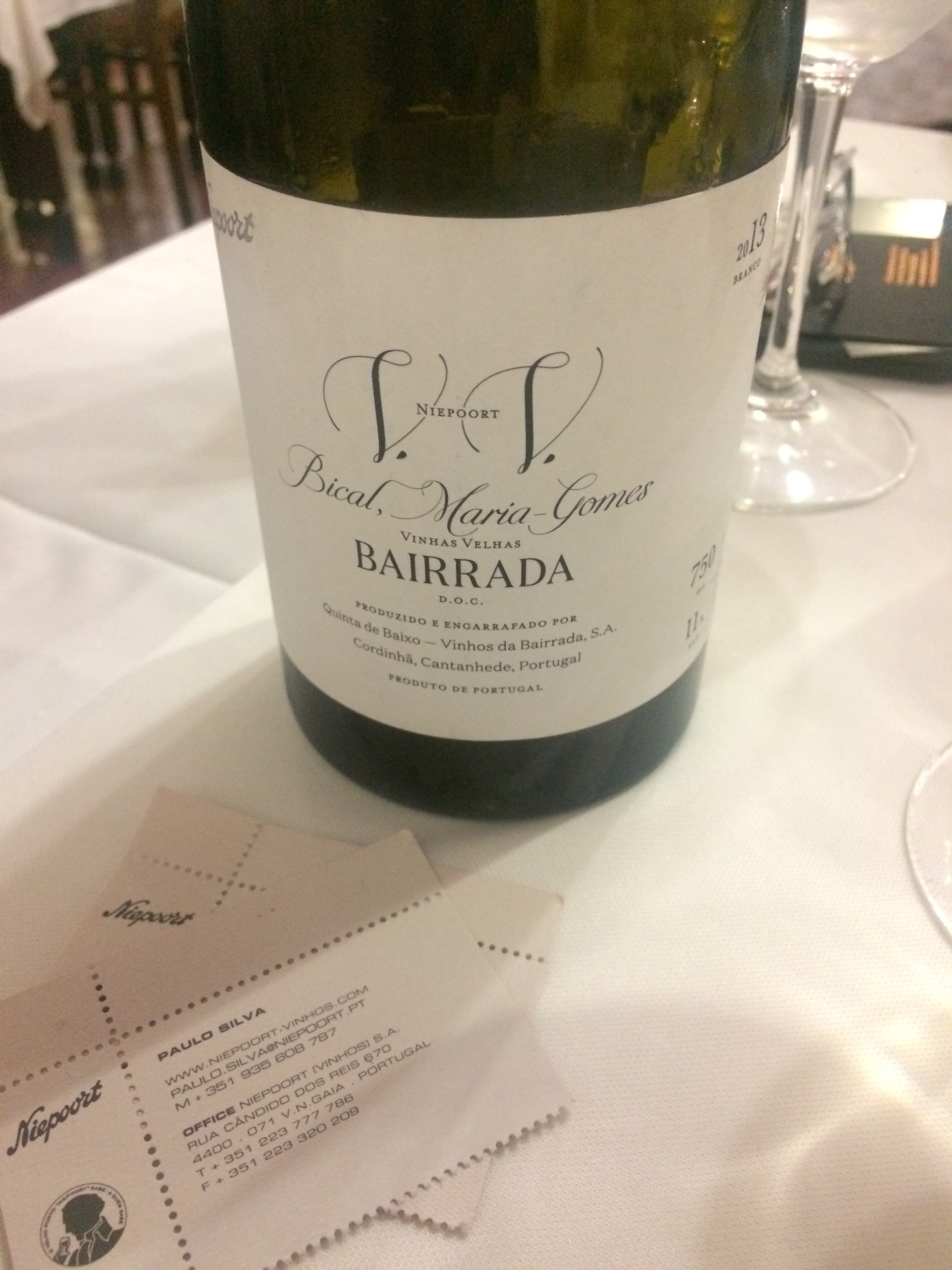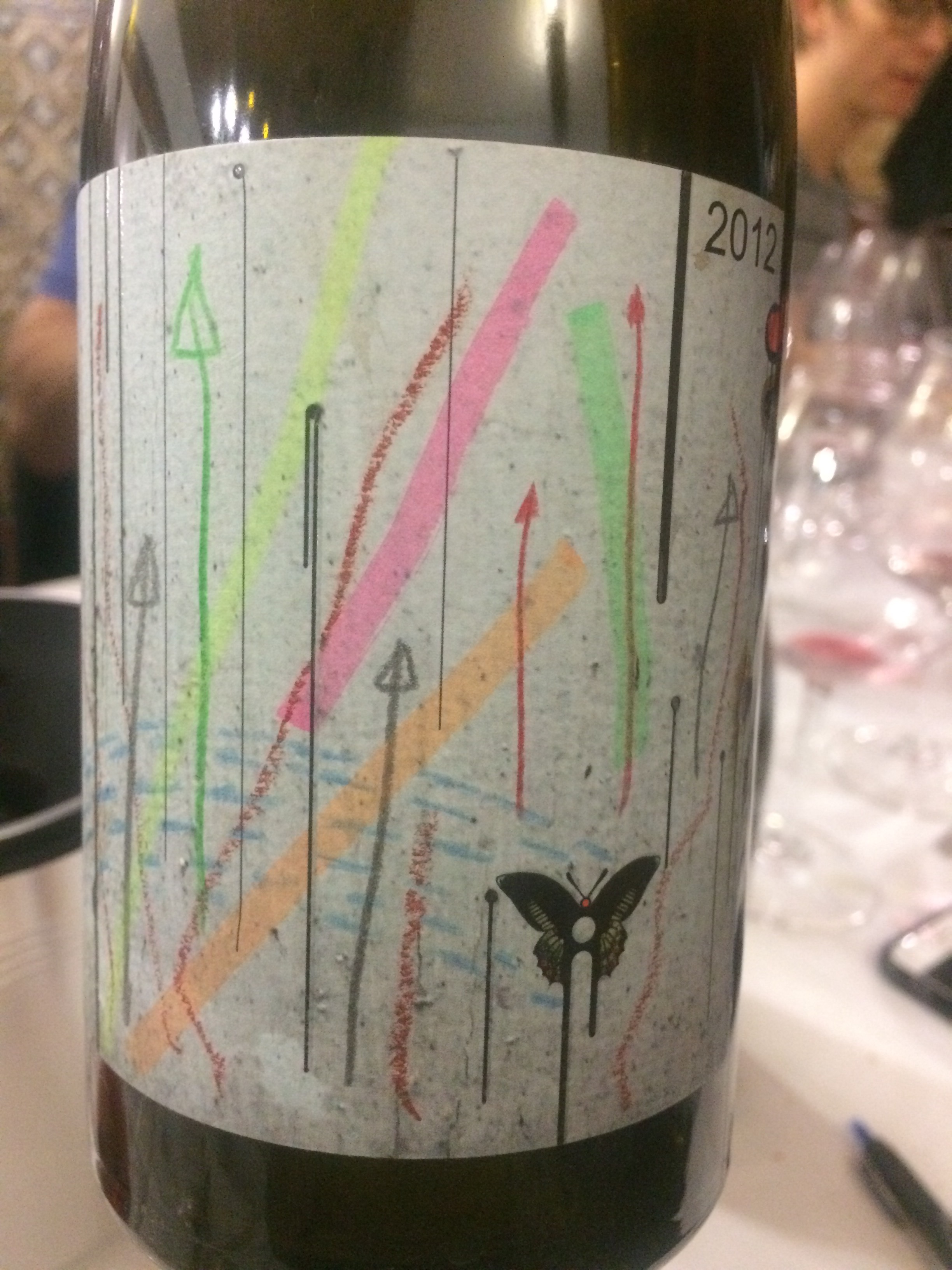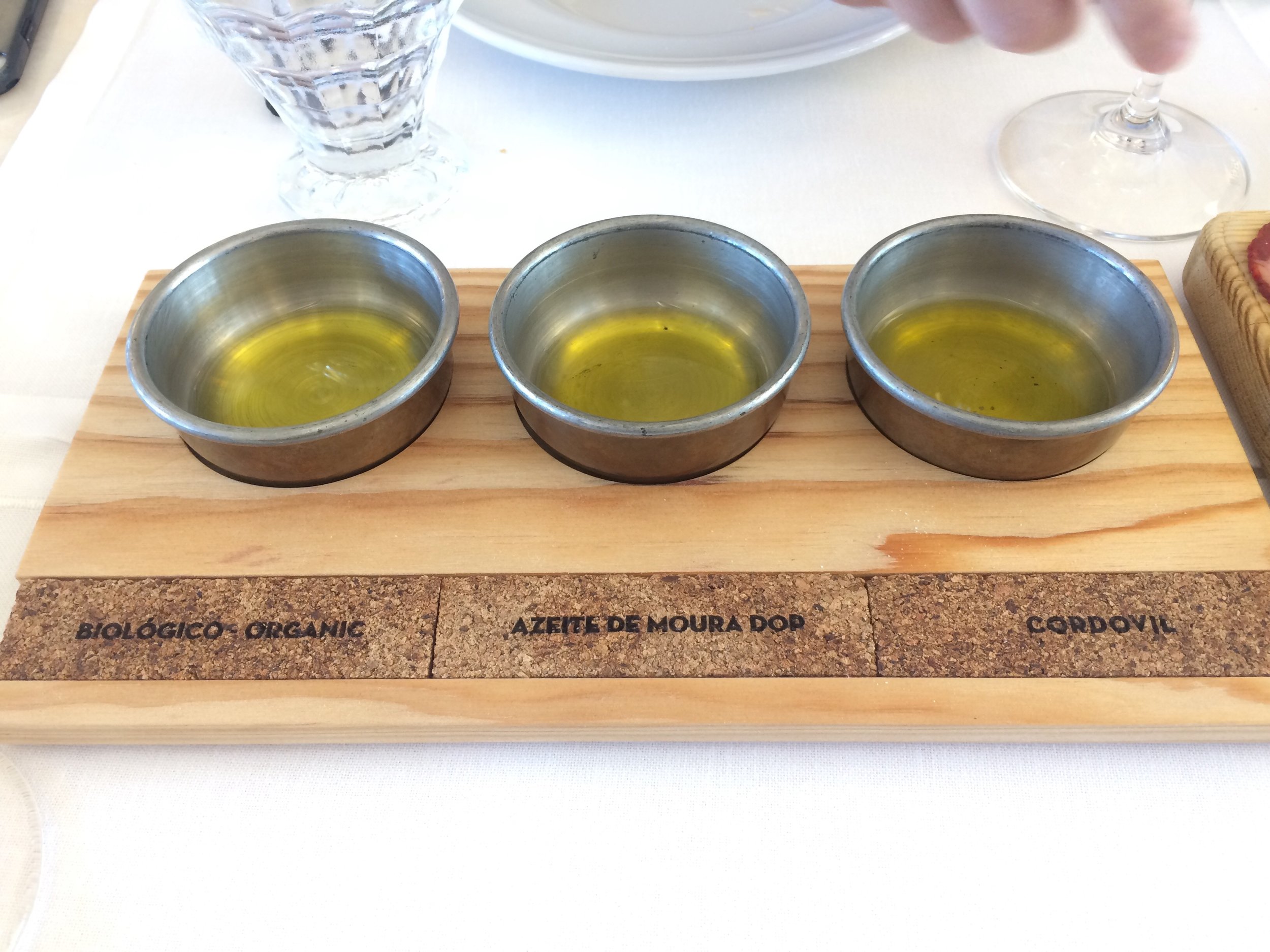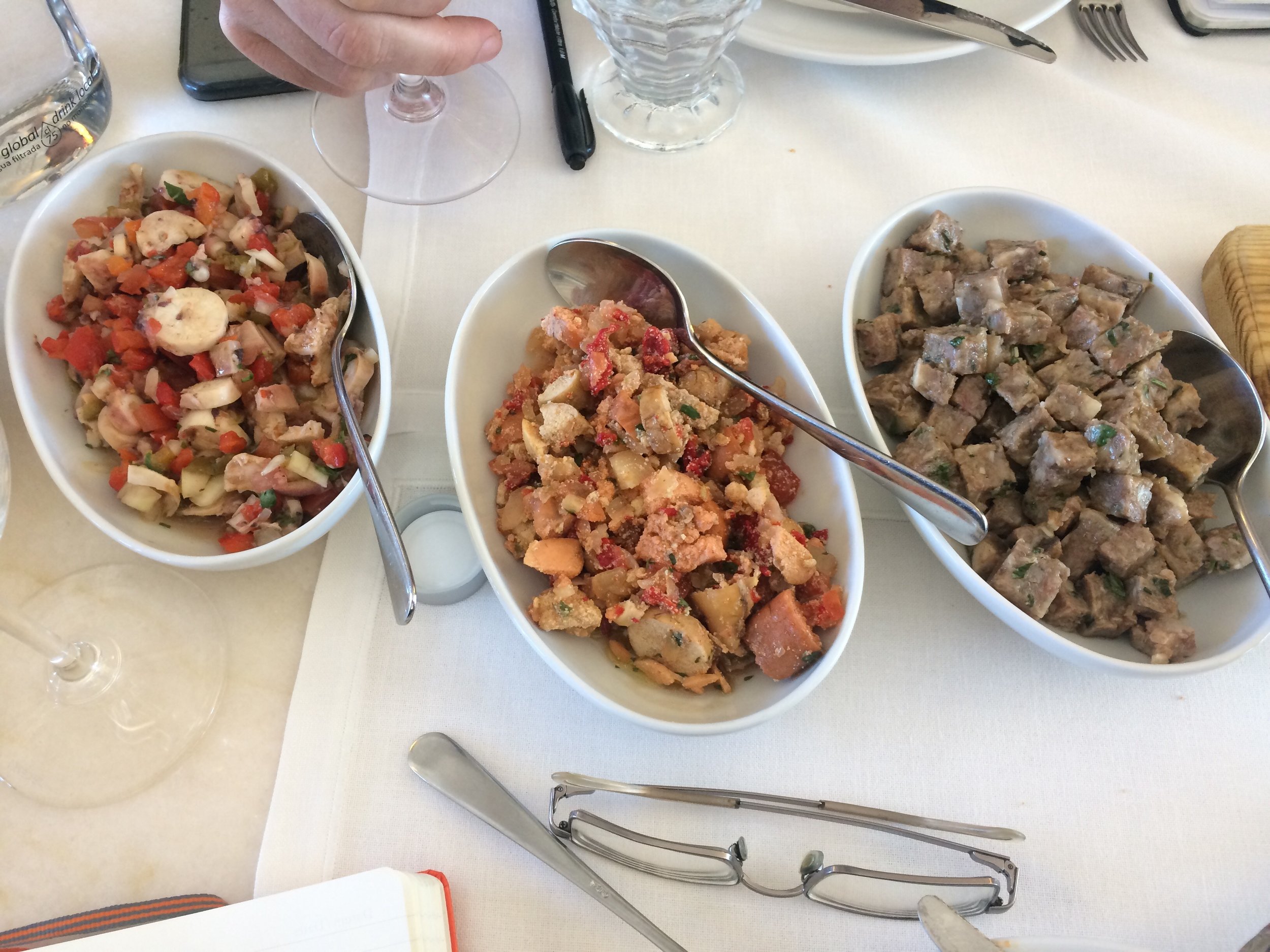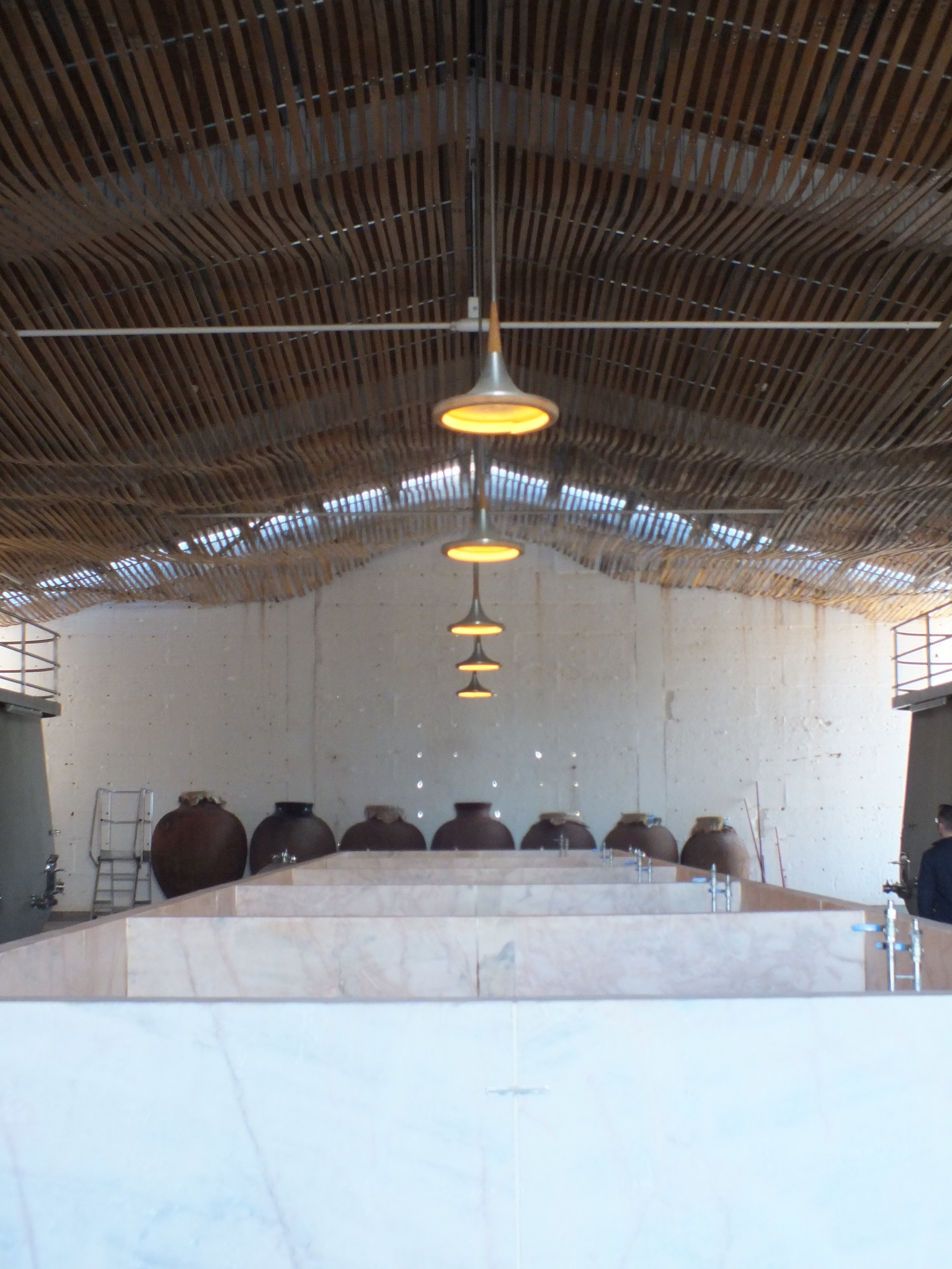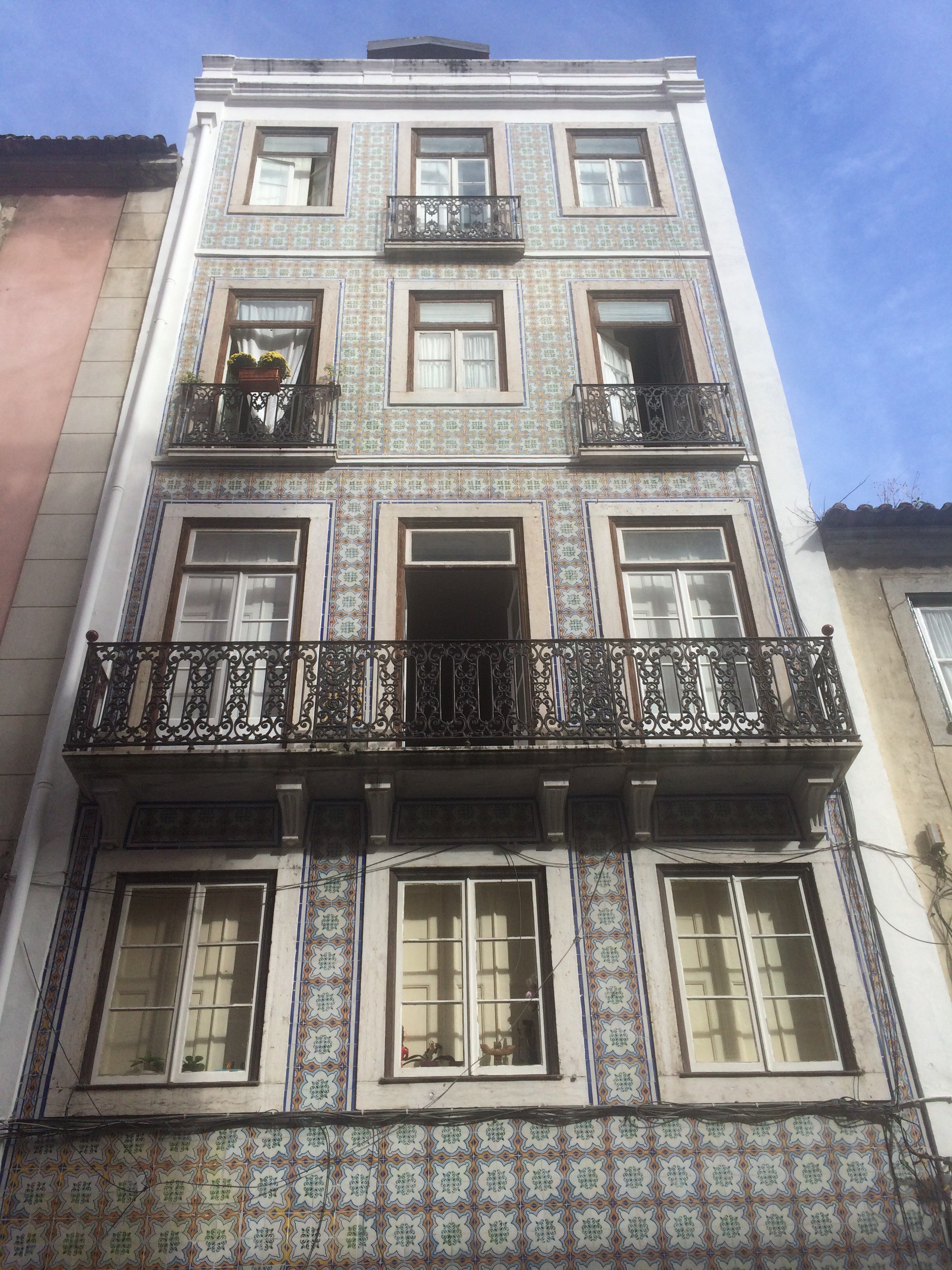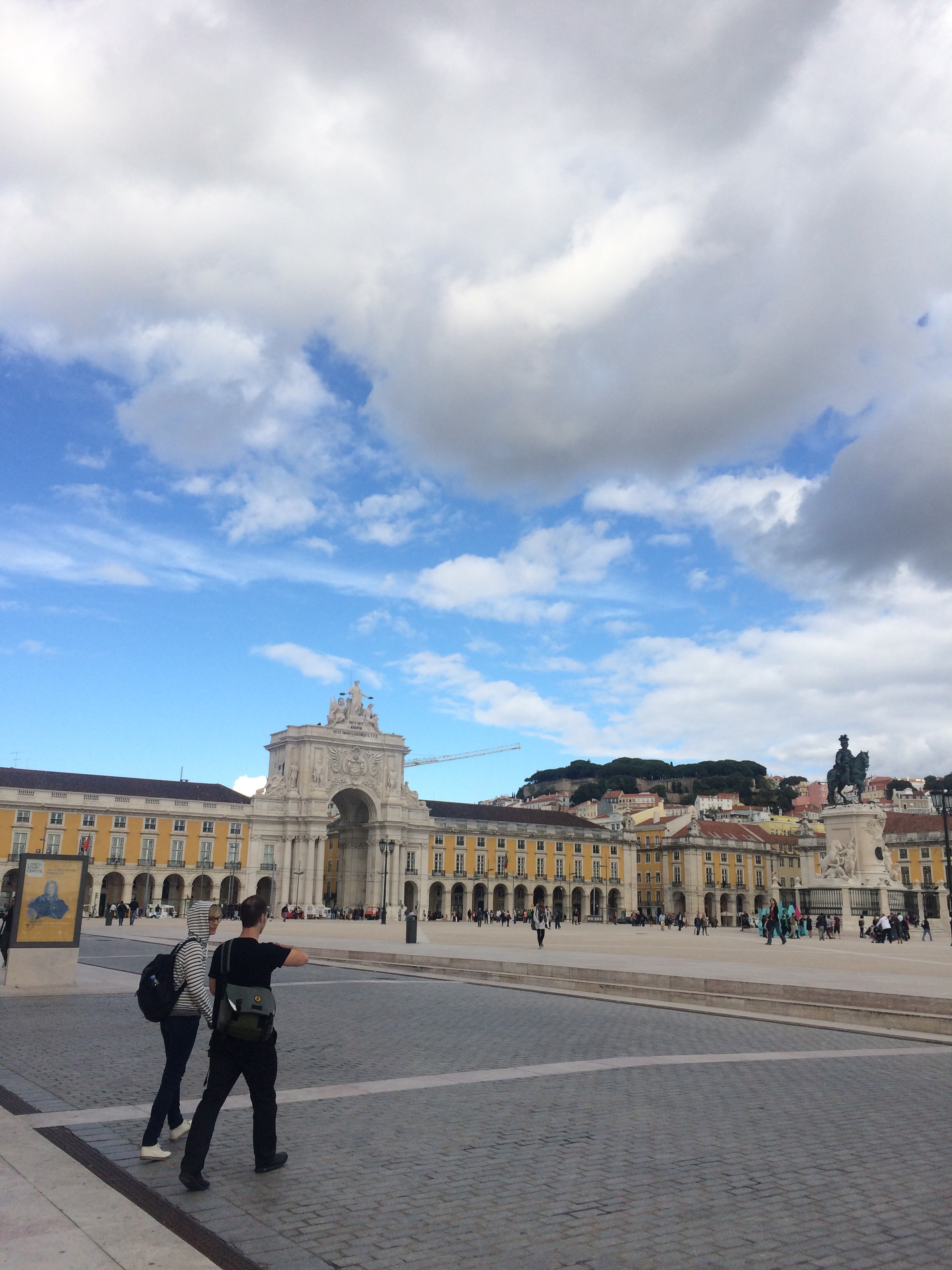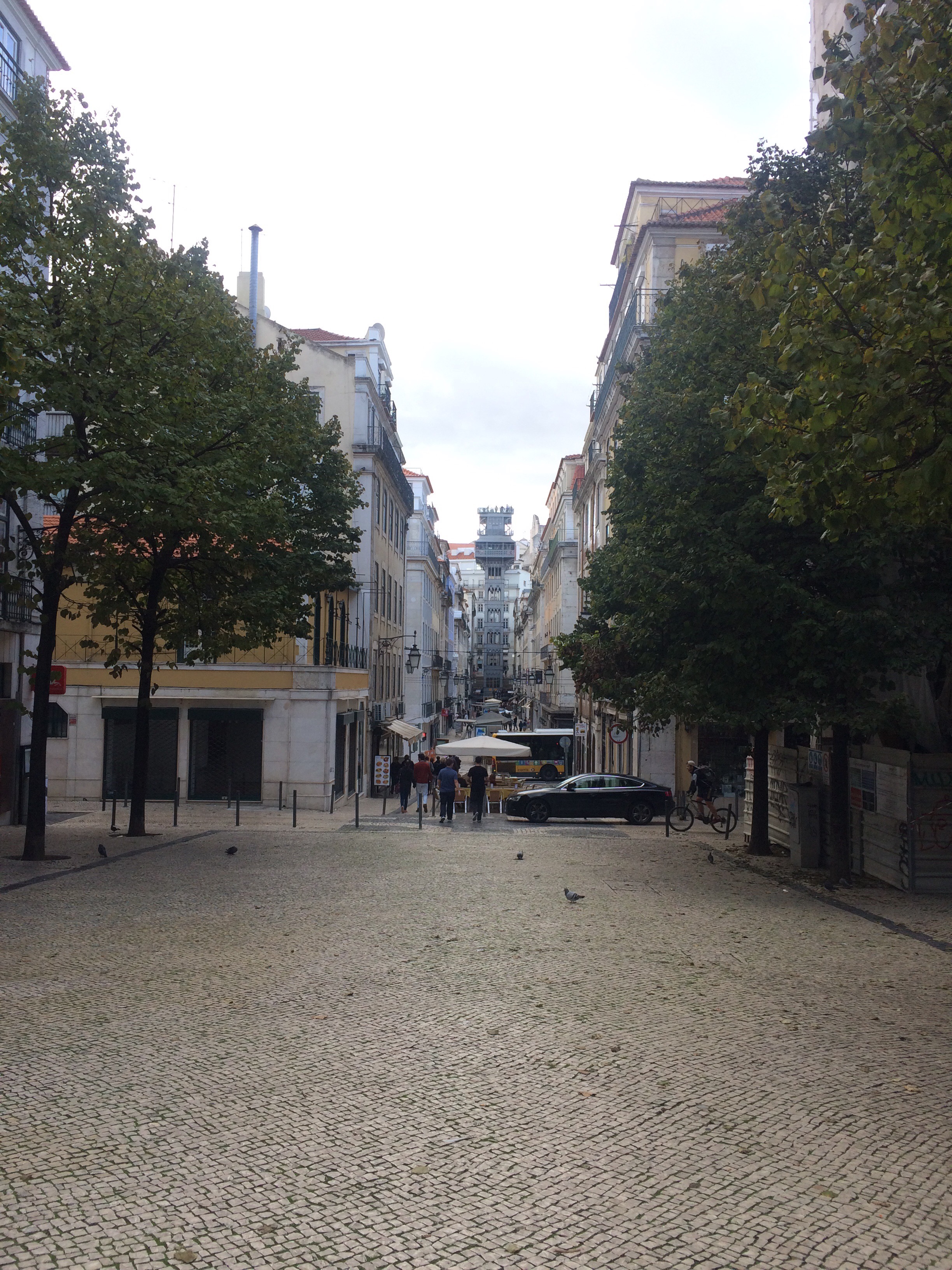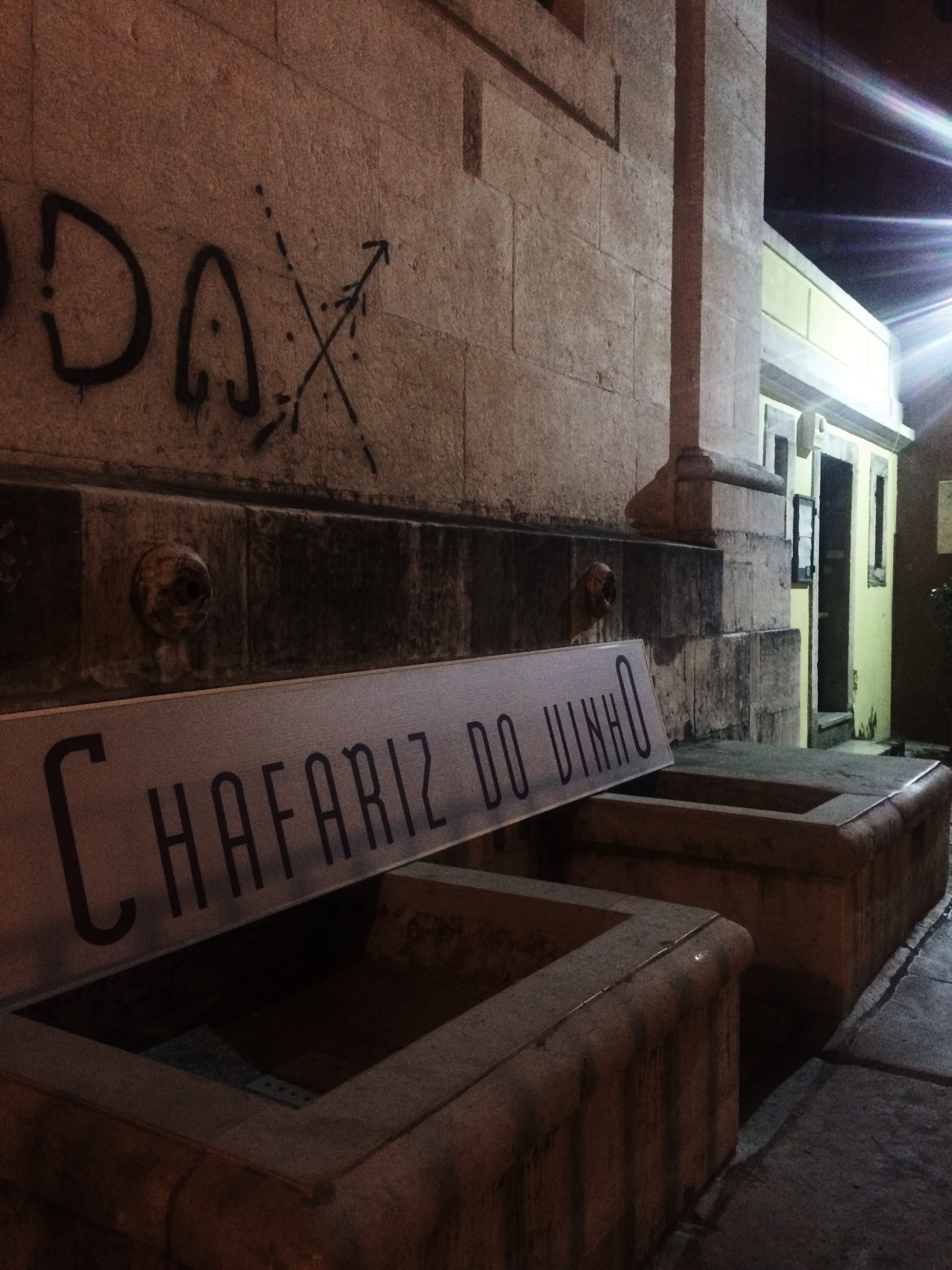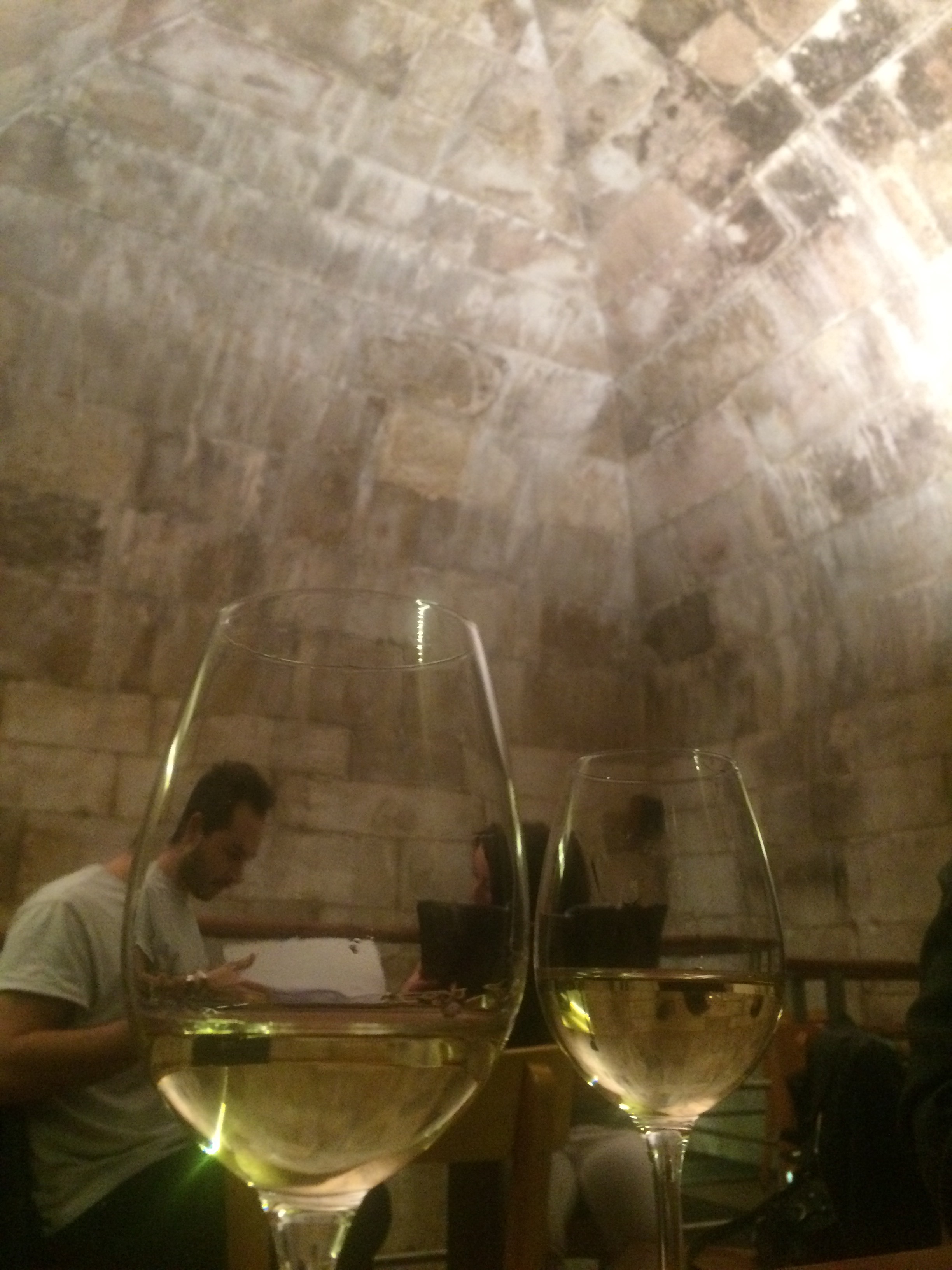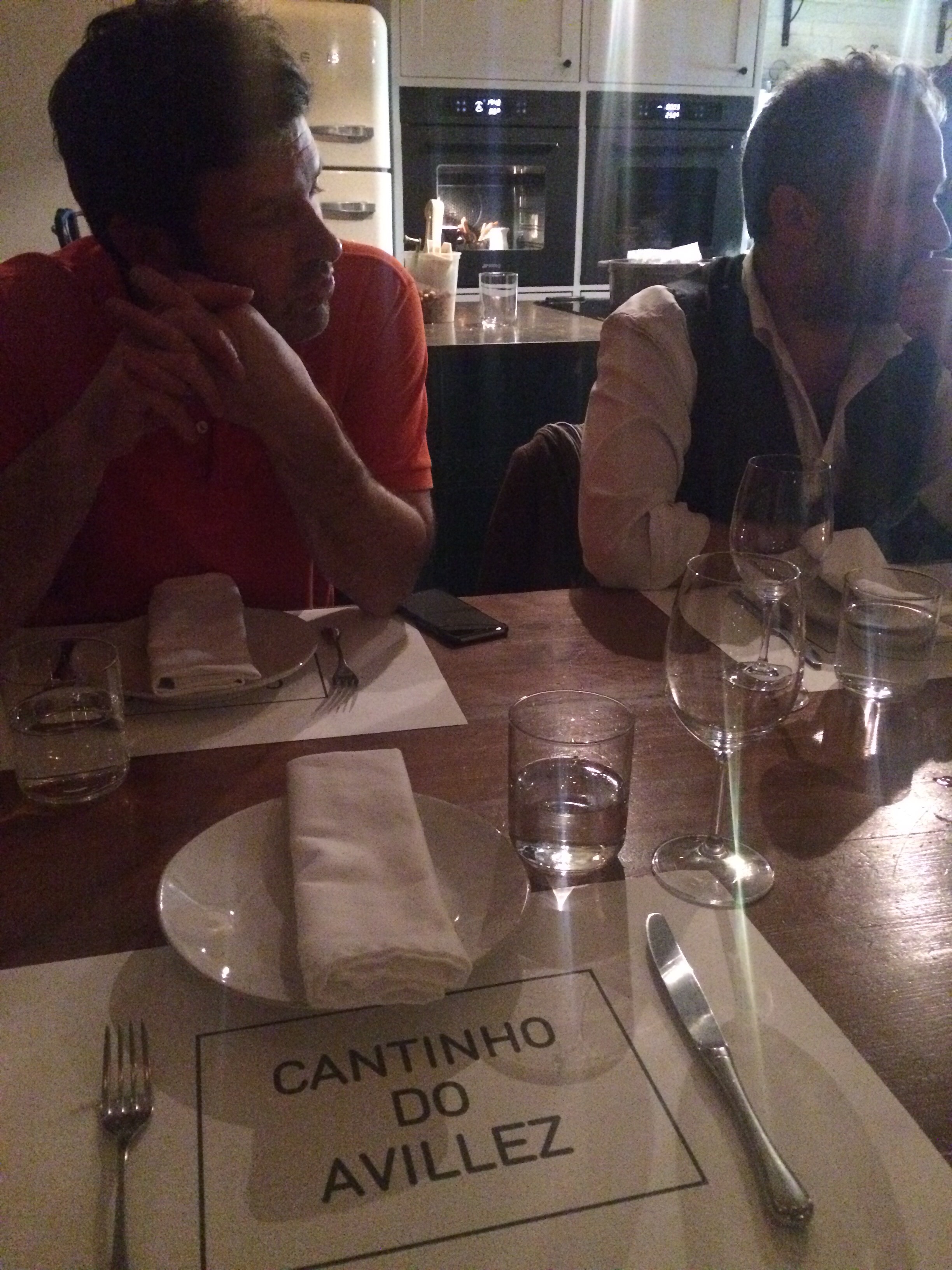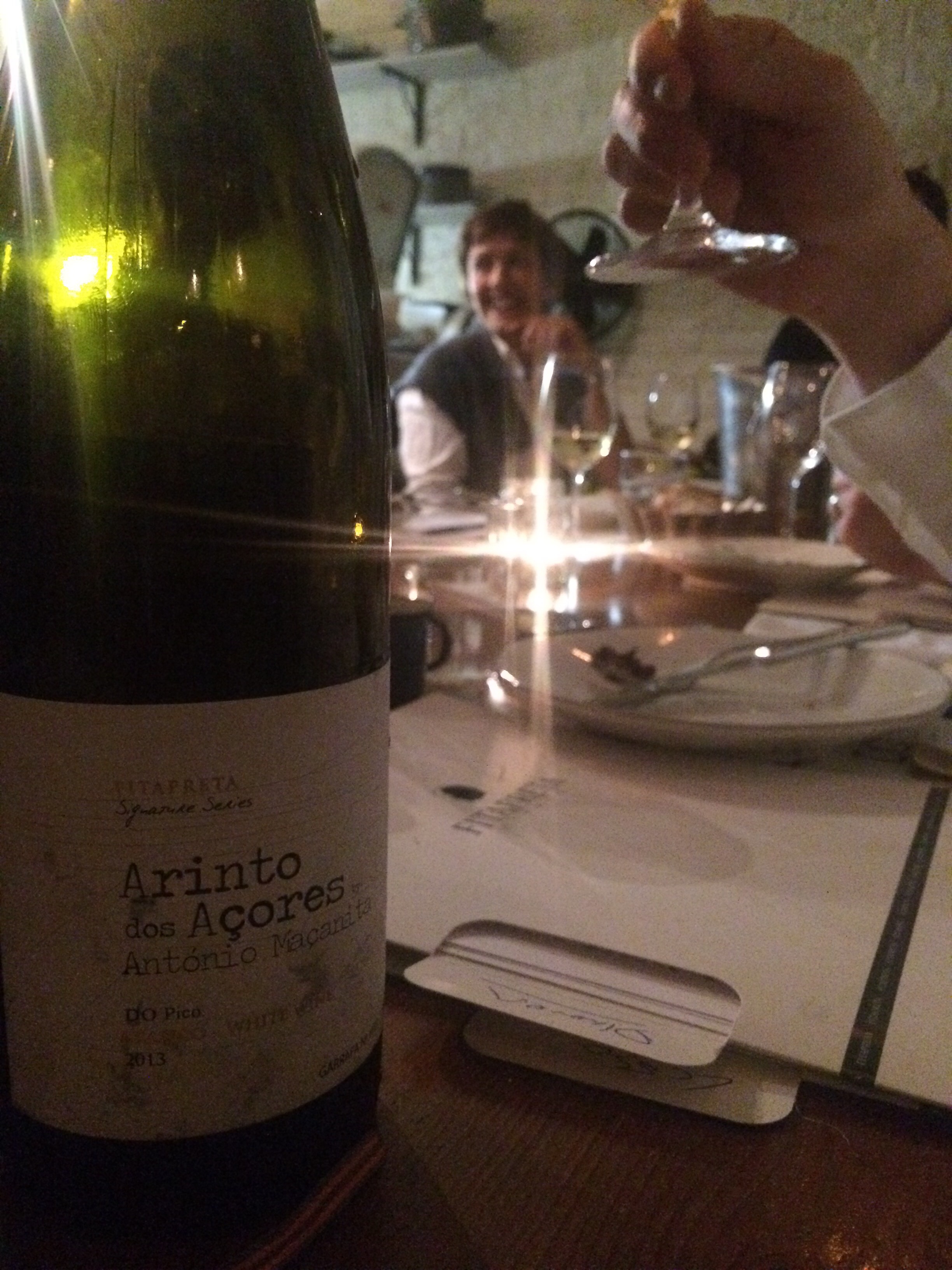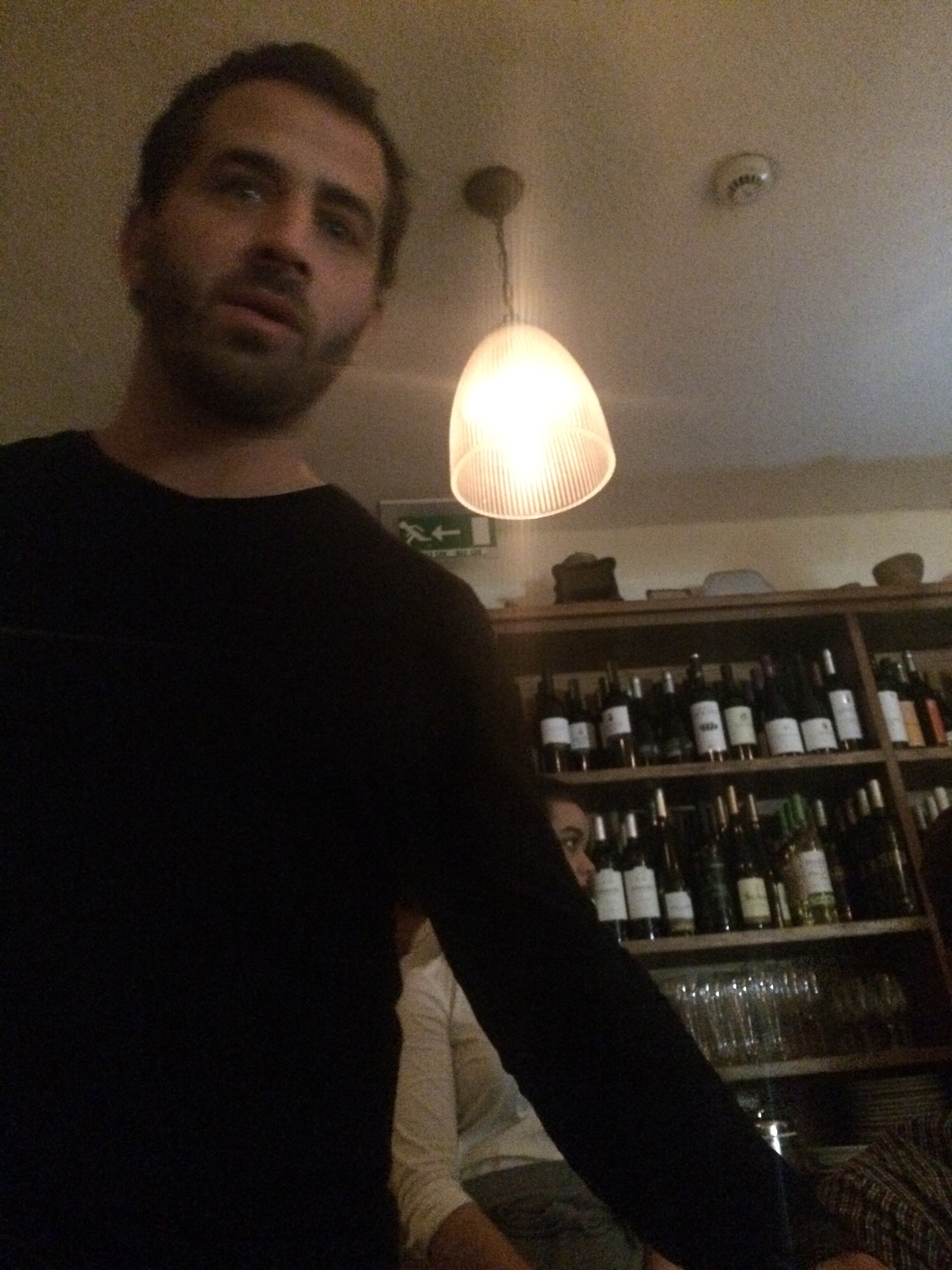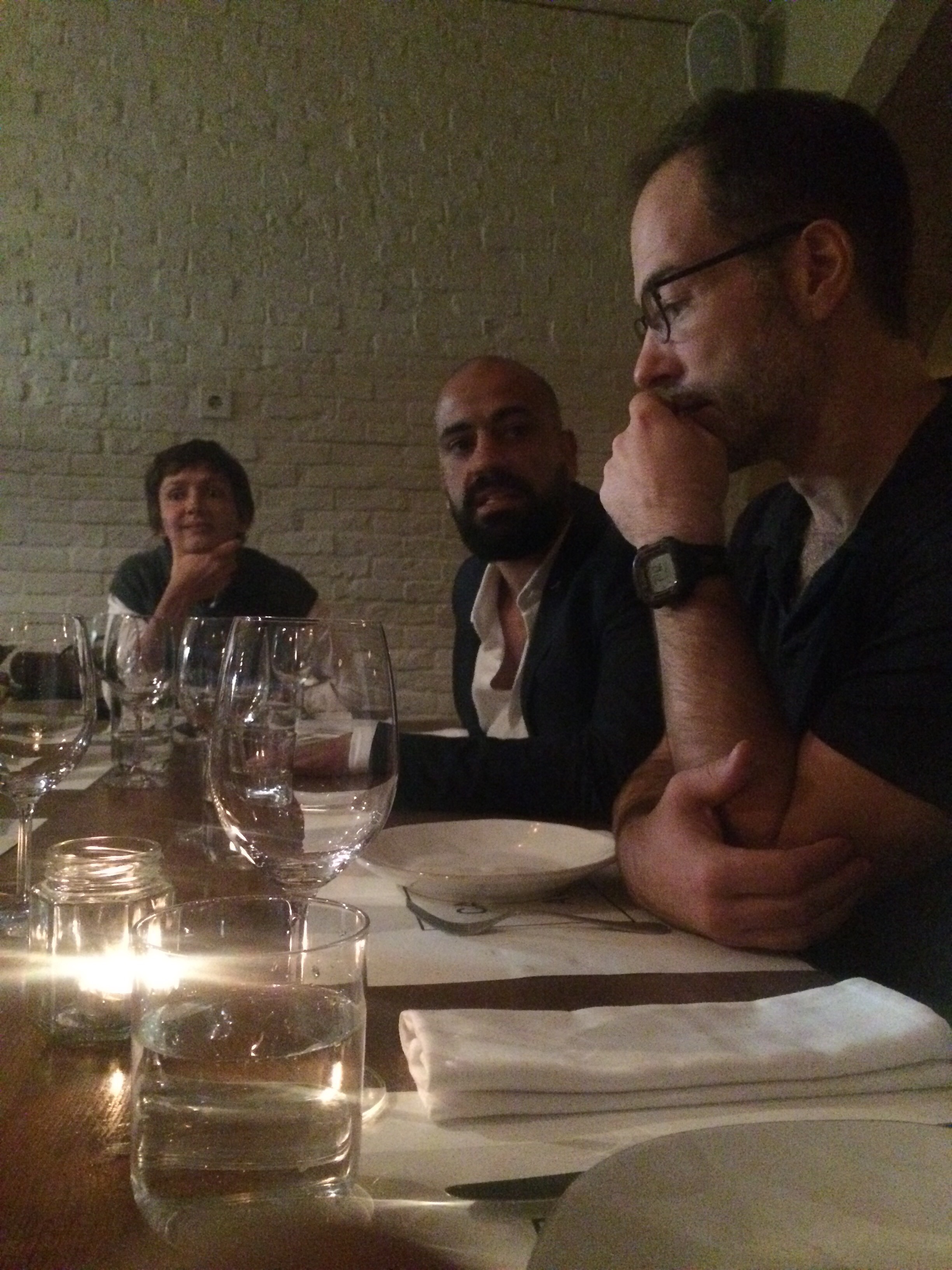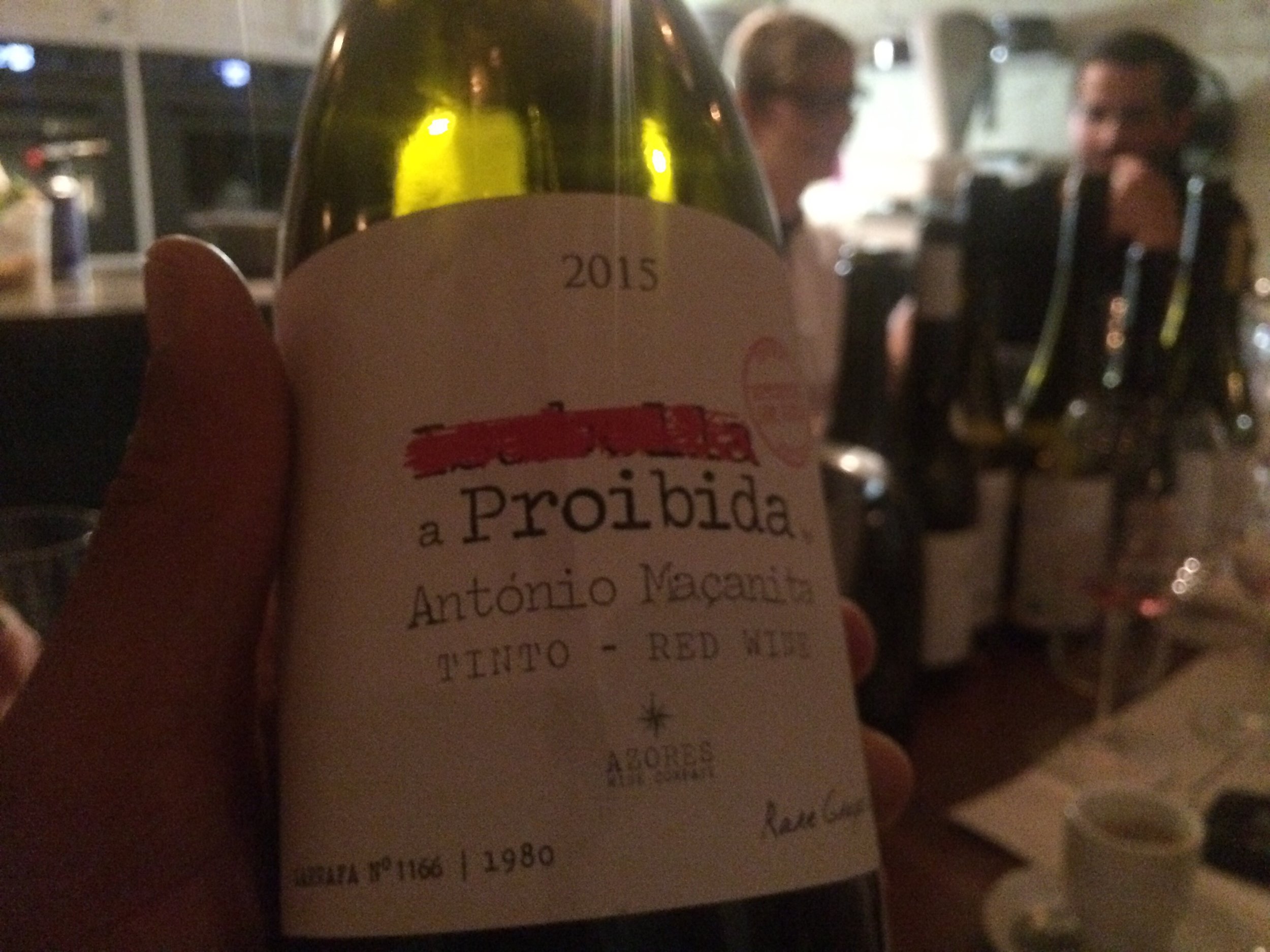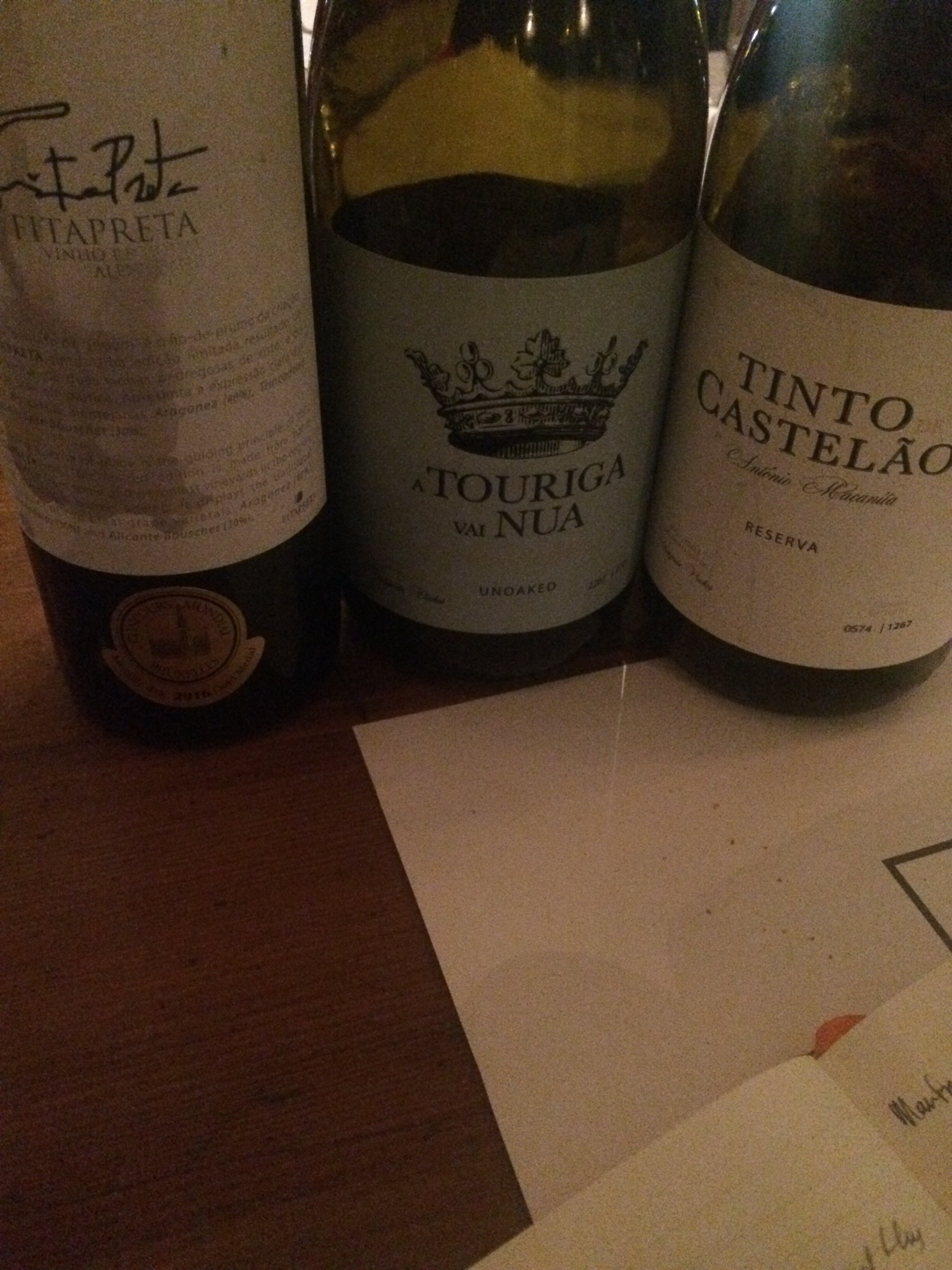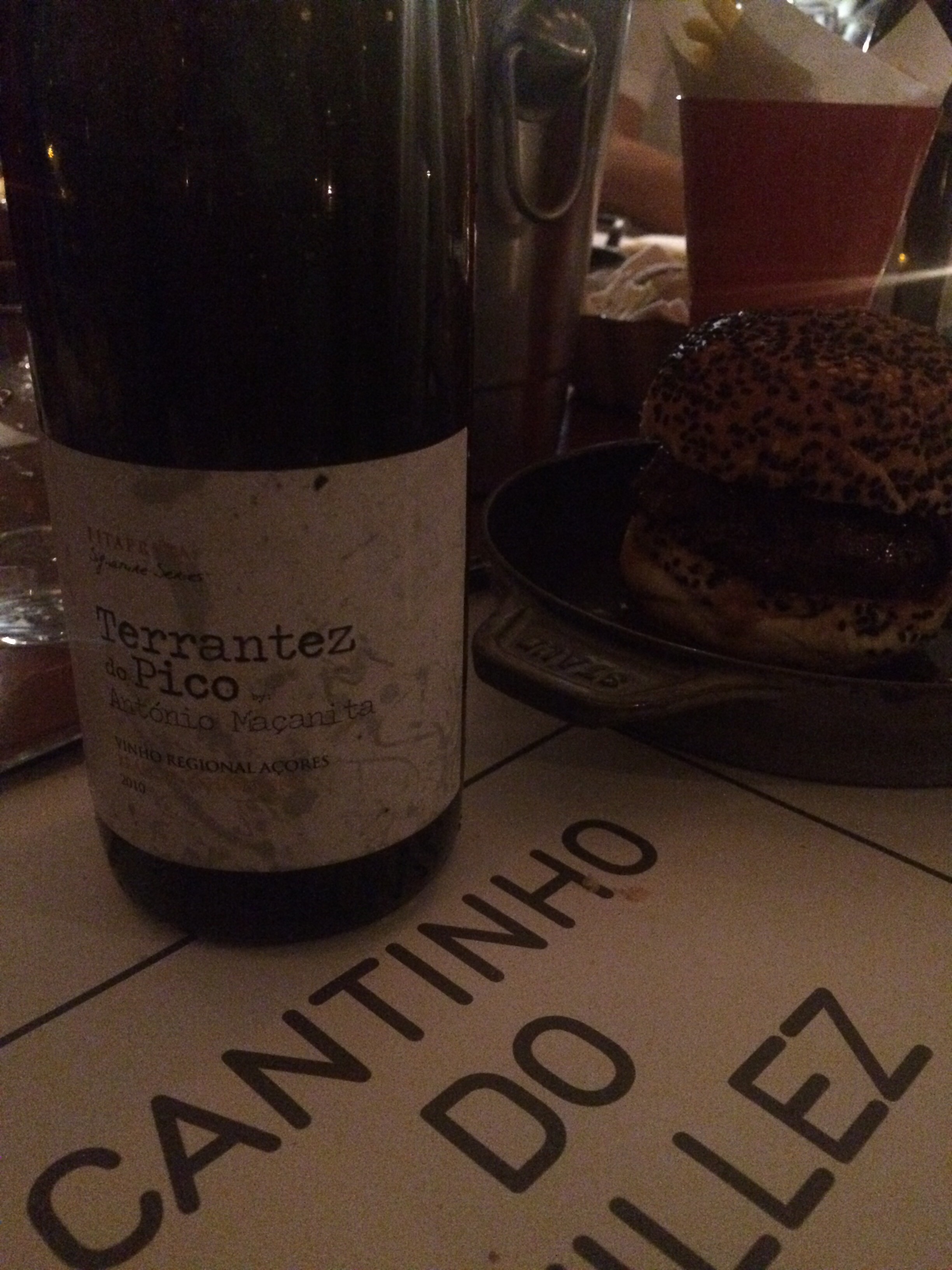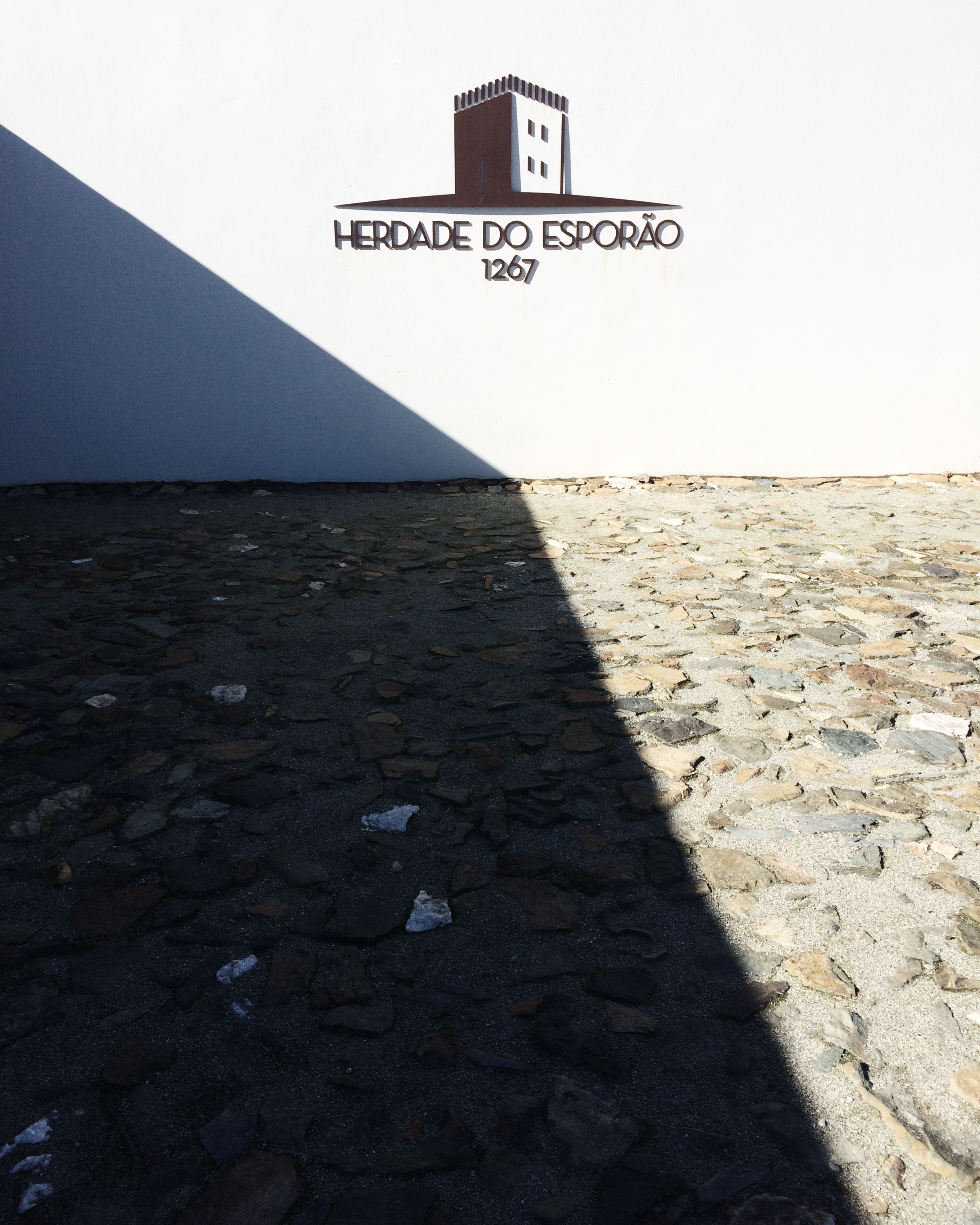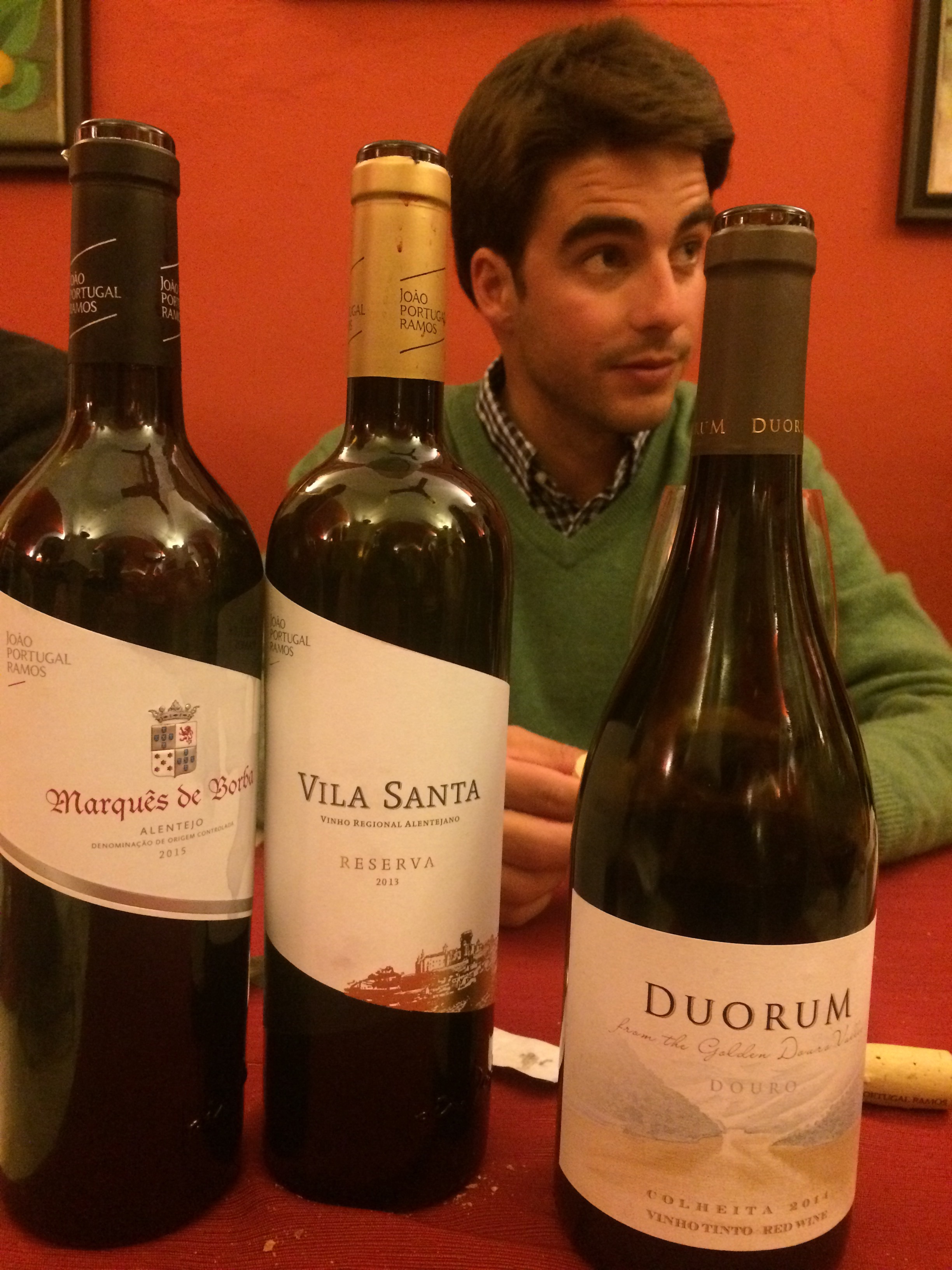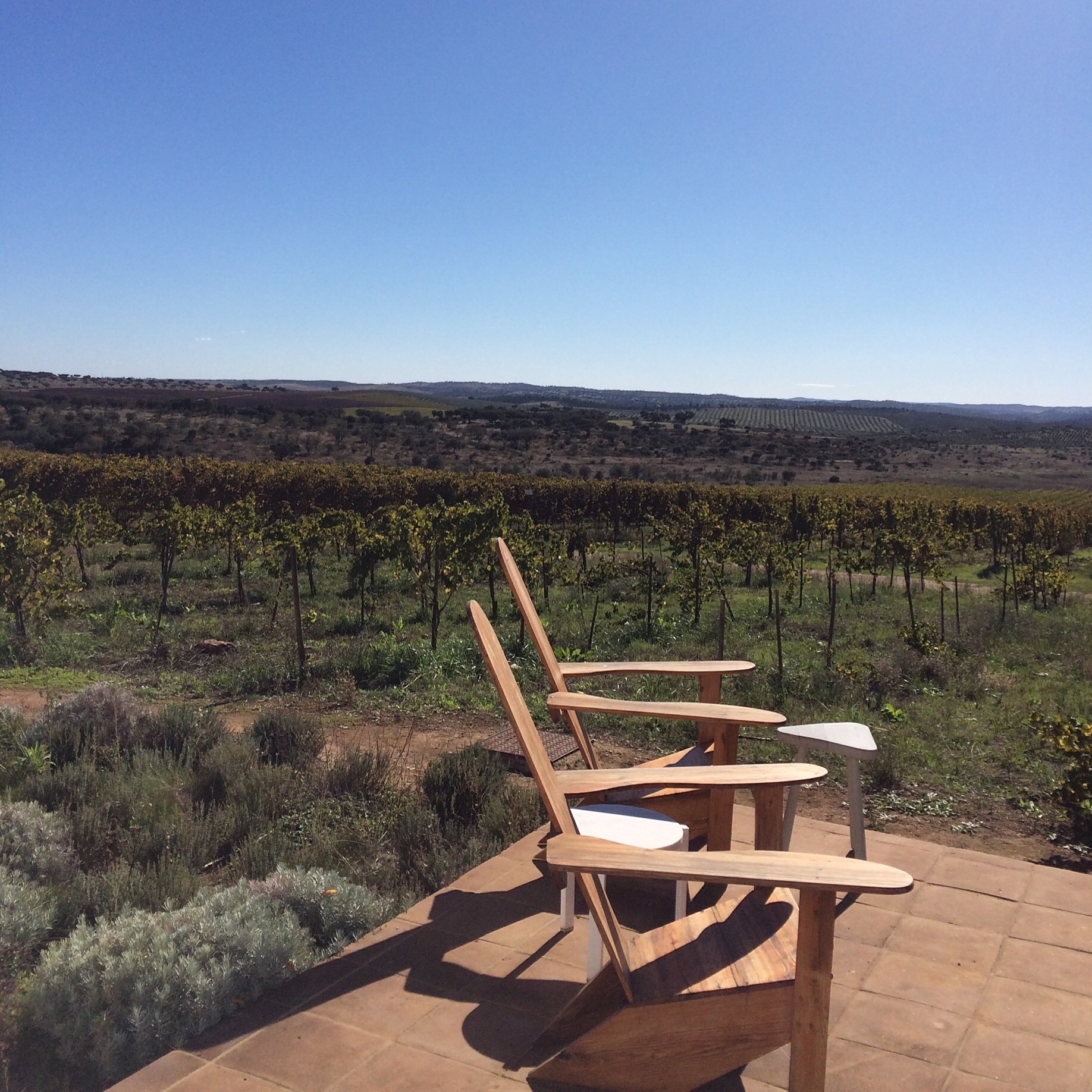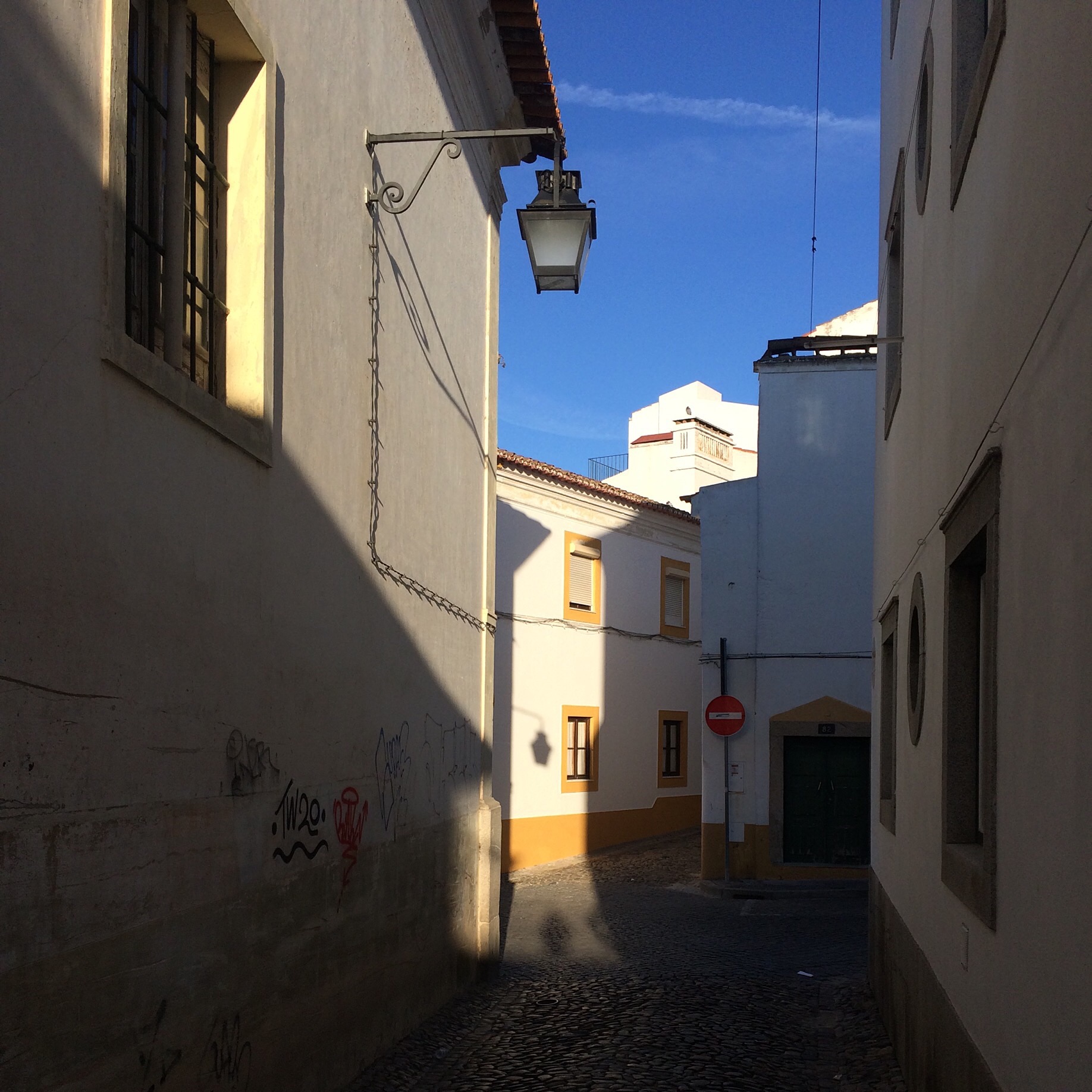NIEPOORT Vinhos - A NIGHT IN PORTO
Dinner at the restaurant O'GAVETO. Notes from a Trip November 2016
Looking at our schedule of wine makers, winery visits and dinners, I was excited that I would have the opportunity to revisit some producers I had already met on previous occasions. This third time would allow me the opportunity to truly synthesize and close 'a' chapter on what these wineries meant for Portugal. Of course there were a few producers I had never heard of and of course there was several among the few that I was very excited finally get the real low down. One of these producers was Niepoort Vinhos.. Niepoort, doesn't sound very Portuguese does it. Hear me out, Niepoort sounds un-Portuguese, only in name. Dirk Niepoort is a winemaker and an innovator that has pushed the envelope and the creative potential of the wines of Douro and the Wines of Portugal. Now let the record stand...Dirk Niepoort, the current winemaker for the Niepoort house, is the 5th generation of wine makers, the house has been family run since 1842, and have employed 5 generations of the Noguiera Family of Master Blenders over the last 50years. Everything about this house is #tradition but with a contemporary profile and flavour of the wines...! Though in the same breath I have to say that the wines are very Portuguese. So much that they stretch the imagination as far as the grapes will allow.
Sitting at dinner with Paulo Silva (Sales and Marketing) and José Teles (General Manager) I was in for a truly immersive dinner and tasting at a world famous seafood restaurant O Gaveto, in Porto.
First a word on the restaurant O Gaveto...the quality of fish and seafood here is managed by two brothers Joâo and José Pinheiro. Located in one of the biggest and most important fishing ports, the Matosinhos which is also happens to be a suburb of the greater city of Porto. The Pinheiro family has been serving up the freshest fish since 1984 and with some of the fish coming from a proprietary farm that the family operates ensuring consistency and quality. This is the first choice restaurant of any Douro wine producer and should not be missed if you visit the lovely city of Porto. As a child of West Indian parents, I've had the luxury of tasting the freshest fish of the Caribbean at home in Canada and at the source in Barbados...direct from the sea. As well one of my earliest wine trips took me to Santorini and a night of dining on fish literally plucked from a holding container in the sea at table side, I can say that O'Gaveto might have eclipsed all of my previous experiences with fresh seafood.
As I sit here writing and thinking, I ask myself how can I get straight to the point about this tasting and dinner, without the writerly flourishes that one might expect and flourishes that I am barely capable of achieving. I will attempt to revisit the tasting, and dinner as I have in my notes.
Dirk Niepoort is a man of ideas, In 1987 he started to make table wines in the Douro and wanted to exploit the potential and the synergy of Table Wines in Portugal. In 2002 he joined the group Douro Boys, which included Val de Meâo, Vale de Maria amongst a few, that intended to market and push the boundaries and more importantly the perceptions of what Douro table wines would be...call them the Barolo Boys of Portugal...modern, avant-gardiste, breakers of tradition but the guardians of heritage. Later in 2012 he would expand his horizons by joining the Baga Friends of Bairrada. Baga Friends - a group of like minded friends and associates looking to improve on the grape Baga. Baga a noble and fierce grape making wines that have been compared to Barolo and also has the capacity to make traditional sparkling wines not unlike that of Pinot Noir in France.
Niepoort is a collaborator, a protagonist and an artist.
“Niepoort is an artist, not thinking of the ‘consumer’ and he does what he believes. ”
He now makes wine in other regions of Portugal, in particular the Dão and Vinho Verde. The Vinho Verde would be the first wine of the night as we were served our first course of dinner.
Teppo Peixe Branco 2016 Vinho Verde. Niepoort Vinhos.
The wine is from an estate purchased in 2015, this vintage is a combination of the grapes Avesso, Trajaduro, and Azal from a vineyard- Quinta de Val Boa located in the subregion of Basto in Vinho Verde. The wine opens with bright green apple, and slight underripe pear with lemon zest. The wine has a gentle spritz, call it effervesence, which is not too distracting, supporting some soft creamy tropical white fruit flavour. A crisp and pleasant wine as an aperitif.
José and Teppo Peixe at O Gaveto. Christopher Sealy
Conciso Branco 2014, Dão. Niepoort Vinhos
The label for this bottle is one of the most compelling I have seen in a while. The artist is João Noutel , like the wines of Niepoort, the labels are conceptual and quite stunning as contemporary art pieces. He has collaborated with other wineries, a few mentored by Dirk. What I did notice about the label and something I have never seen on any wine label...PERIOD, was that the hand on the wine label was that of a black man, in a suit. I thought the hand of Barack Obama, of course, as this trip was on the eve of the US Presidential Election last November.
The vineyards for this wine are located at 600-800metres above seal level, comprised of old vines Bical and Encruzado. Fermentation for this wine was in traditonal granite lagares and malolactic fermentation was completed in barrel. Initial impressions on this wine was of lovely brioche like aroma with apple, sweet peaches, lemon and lemon curds. A wine in its youth the palate continued with nice oak integration and a rich palate dominated by bright acidity - a vinous combination of apple, white peach and pastry notes.
Conciso. Niepoort Vinhos. Christopher Sealy
This was not the first experience with a Dão wine from the hand of Niepoort. My first experience with his wines were with DODA. I proceeded to ask our hosts about this wine.
DoDa / (Do)uro and (Da)o. Niepoort Vinhos.
The concept was suggested by Dirks' father, Rolf, to create the best wine in Portugal by combining the elegance and longevity of the Dao wines and the power and structure of the Douro in one wine. The collaboration would work best with his equal, the wine maker Alvaro de Castro from Quinta de Pellada in the Dão. de Castro himself a master of winemaking in the Dao. The original blend was 50/50 of each wines...being made at their respective Quinta and then blended at Niepoort in Douro. The original name as I was told was DADO, but they had to change the name, at the same time the wine falls out of any appellation law and is simply and beautiful concept wine. Currently the 2011 vintage is available in our Ontario market from Terroir Imports. The wine is killer!
Bical + Maria Gomes Old Vines 2013, Bairrada. Niepoort Vinhos.
This is a gem of a wine, coming in at a whopping 11% alcohol from 60 to 100 year old vines on limestone soil from the coastal region of Bairrada. The elevated acidity in these grapes allows for full fermentation and malolactic to occur in 50 - 100 year old black barrels, originally from the Mosel, Germany. Try to imagine sucking on a well chiselled diamond!
This wine is laced with layers of mineral, mineral and more mineral tones, with slight green notes of green garden herbs: celery, parsley and savoury. The nose is rather quiet in regards to fruit, though I think with time this wine will evolve towards bright and gentle white floral notes, with lean citrus undertones.... I mean this wine is so pure and clean it was difficult to find the upfront pleasure of drinking it in it's youth. Personally, I would study this wine and with time re-visit and intellectually enjoy it's evolution.
I had to ask José and Paulo about this wine and they both attested that Dirk is someone who 'learns by doing and he respects the terroir, the grapes and the identity of the wines. His collaborations with wine makers such as Telmo Rodriques of Spain, Raul Perez and other have informed his beliefs on the benefits of balance and low alcohol in wines'.
Both admit that it is quite possible that Dirk's wines are 10 years ahead of their time. All of the vineyards are currently converting to biodynamic viticulture, the concept of 'less is more' holds true is an underlying theme to the Niepoort wines.
Bical / Maria Gomes. Niepoort Vinhos. by Christopher Sealy
Redoma 2015, Douro. Niepoort Vinhos.
This wine is sourced from an 85 year old vineyard at 600-800 metres above sea level on schist and granite soils in the Cima Corgo. A classic field blend primarily composed of Rabigato, Codéga di Lorinho, Viosinho amongst the few. Here is a wine of upfront pleasure and richness from the floral and bright fruit of lemon, peach and apple with distinct mineral highlights. The must is fermented in oak with 8 months of ageing and the wine still remains as fresh as apples and summer peaches. If you thought that elegance could not be found in the Douro, then you should try this wine.
Charme 2014, Douro. Niepoort Vinhos.
Charme is made in one of the historical Port Wine Quinta in the Niepoort portfolio of properties, the Vale de Mendiz. The grapes, mainly a field blend dominated by Tinta Roriz, Touriga Franca and others, are whole bunch foot trodden in classic 'lagares', with 3 days of maceration with fermentation commencing and then completed in barrel with further ageing of up to 18 months. Out of the bottle the wine leaps forth with pretty red floral notes, some wood spice moving to red apple, red cherry and field berry fruit. Overall the nose is subtle and complex moving to a palate that is gentle with fine grained tannin wrapped in a halo of spiced and slightly candied fruit of currant, strawberry and raspberry flavours.
Rumour has it that the name 'Charme' is a play on words with Charmes-Chambertin of Burgundy. Taste the wine and see for yourself!
PROJECTOS
Recently the Niepoort house launched the Projectos Series of wines. The Projectos vision manifests itself as limited edition of wines focused on regions and grapes of Portugal that are unique and of interest and/or are made in partnership with other like minded wine makers from within Portugal or abroad. The Projectos include the Conciso Branco and Tinto of Dao , Poerinho of Barirarda and Turris an old vine Quinta in the Douro.
“Projectos Series aims to express the different identities in each region. ”
Charme and Bastardo- my favourite companions of the night. Niepoort Vinhos. by Christopher Sealy
Bastardo 2010, Douro. Niepoort Vinhos.
The grape Bastardo was relegated to the sidelines of Douro wine production because of it's inability to produce wines of colour and weight, it lacked the power to contribute to port wine blending. The Bastardo grape is related to Trousseau of the Jura in France. What Niepoort has been able to do is fashion a wine of brigthness and a légèreté of bright red cherry, with herbal and savoury notes. A nice salinity runs through the wine which is rather tart and soft in tannin.
Conciso Tinto 2013, Dão. Niepoort Vinhos.
Another killer, label on this wine, a blend of old bush vines Baga, Jaen, Alfrocheiro and a touch of Touriga Nacional from a very ancient vineyard in the Dão. Like Voltron the wine is Part de-stemmed plus whole bunches, with the fermentation in granite lagares followed by barrel ageing and we have before us a wine of elegance and beauty. Tart red and blue fruit, with a wild mint to cola scented aroma laced with black pepper spice. The palate has earthy and gritty tannin, with more of the same fruit with light vegetal/herbal tones. This wine is beyond complex it is compelling.
Baga 'Poeirinho' 2014, Bairrada. Niepoort Vinhos.
An unfined and unfiltered wine, a palate of black plum and black cherry, with fresh dark green savoury notes. From a cool vintage the wine is tart and bright with a cool and lean profile.
Baga 'Poeirinho' 2013, Bairrada. Niepoort Vinhos.
This vintage shows a touch more warmth than the 2014, with black plum, cherry over botanical flavours of cola and root, with gentle tannin and an earthy profile.
Turris 2013, Douro. Niepoort Vinhos.
From a 130 year old single vineyard, dominated by the grape Touriga Franca, the wine is otherwise a field blend, that offers up a wine that is fresh and lifted, with dark berry fruit, floral hints, and warm spiced tone on the nose. The palate offers pure and driven flavours of ripe dark berries, plush and pleasant with a tartness to balance and easy tannin to keep the wine pleasurable.
The Finish.
Well, you can imagine how fun and engaging dinner was. We finished the meal with a 1997 Colheita Port, which was the best way to finish this engagement. I was thrilled. José and Paulo were very charismatic hosts, the food was amazing, the wines were fantastic! It was an honest and meaningful encounter with wine.
A fantastic lineup José Mourinho would be proud.
To find out more about the Niepoort Vinhos you can go to their website or download an app they have developed...yes The Niepoort Vinhos. App.
Some of the wines form Niepoort Vinhos are imported to Toronto by Bernard Stramwasser of Le Sommelier Wines


